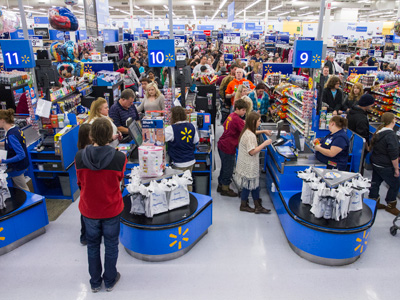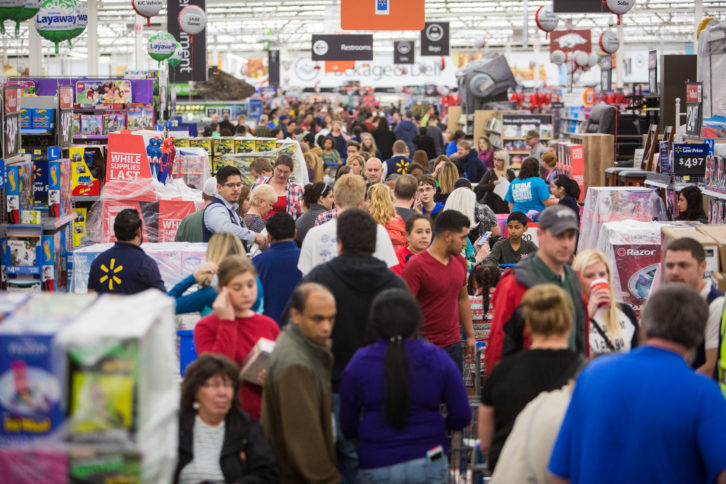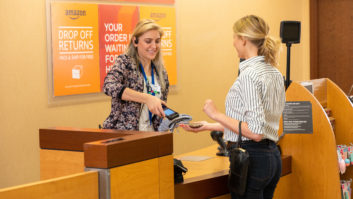
TWICE recently caught up with Mike French, Vice President of Partnerships at Digital River, who shared his insights into what we can expect this holiday season and what retailers can do to prepare today and thrive and survive the upcoming holidays.
TWICE: How soon is soon enough for retailers to prep for the Holiday Season?
Mike French: Merchants, both online and brick-and-mortar, have been focusing on the 2022 holiday season for months now. That was typical prior to the disruption we’ve seen in the past few years, but it has become even more critical as brands and retailers are trying to navigate a supply chain that has been challenged as well as changing shopper expectations. You need to be everywhere that shoppers are, which means you need a digital strategy. That takes time. If you already have an online channel, you need to make sure it is optimized for a great customer experience, which includes the ability to communicate with all of your systems so if a customer orders an item, they don’t find out later it’s out of stock or delayed if you promised two-day shipping.
TWICE: What recommendations do you have for retailers facing labor shortages?
French: Merchants looking to optimize the talent they have as well as optimizing efficiencies have been leaning into technology in recent years, and that trend is picking up as technology improves. From more automated warehouses, to self-checkout, to machine learning to optimize your fraud strategy, we are going to continue to see brands turning to automation as one way to address a shortage of labor.
TWICE: Shipping costs are accelerating faster than most retailers can keep pace with. What can retailers do to address rising carrier costs?
French: Brands are diversifying their supply chains – adding more supply chain partners, which also gives them options on how, where and when things are shipped. They are turning suppliers into partners – meaning joint planning and forecasting to optimize supply and shipping capacity across more links in the supply chain. Where possible, successful brands will offer merchandising to drive consumer selection of cheaper shipping options that leverage parcel consolidation and route density. Unfortunately, high costs are likely to be with us for some time. So long term, merchants need to look at where they keep their merchandise. Some brands are putting warehouses closer to where the product needs to be – rather than shipping from a single warehouse to multiple locations around the world.
 TWICE: What are you most excited for this holiday season at Digital River?
TWICE: What are you most excited for this holiday season at Digital River?
French: We’re excited to see how new channels like social, video, entertainment, and gaming drive a change in approach promotion and merchandising. We think that with consumers’ wallets getting thinner, brands that meet consumers on their ground without invasive or disruptive marketing tactics will win out. We’re also curious to see the growing impact of big data and analytics on recommendations and how this translates to attach rates and higher order values.
TWICE: How important is it to have multiple and preferred payment methods?
French: Critical! We help brands sell globally – and if you don’t offer the preferred payment methods, the familiar and expected payment methods, shoppers will go elsewhere. It’s not enough to just offer a few of the big credit cards. Different regions have different preferences, and many times it’s not a credit card. But even for domestic merchants, you want to create a great shopping experience for your customer, and you want to maximize your sales. Wallet payment methods are a great example here. Again, it’s important to consider the impact of inflation and rising interest rates that make same-as-cash and lower interest BNPL (buy-now-pay-later) options very attractive. Payments are sometimes overlooked, but to your customer, they can make or break a sale.
 TWICE: Customers are getting tired of hearing about delays, and it’s hard to meet their expectations with all the industry challenges we’re facing. What recommendations do you have to help communicate better with customers?
TWICE: Customers are getting tired of hearing about delays, and it’s hard to meet their expectations with all the industry challenges we’re facing. What recommendations do you have to help communicate better with customers?
French: First of all, communicate. If something is delayed, let your customer know. Being left in the dark is frustrating and increases the likelihood that customer will never come back. Make sure your systems are talking to each other. It doesn’t help to show a product in-stock or available with two-day shipping on your website if your fulfillment team already knows it’s out of stock or delayed. If there is an unexpected and lengthy delay, offer your shopper an incentive not to cancel – consider a 10% off coupon they can use on the next purchase. The main thing is to be considerate of your customer, and their experience. You want to keep that customer for years to come, not just one purchase.
TWICE: How can retailers stay positive this holiday season?
French: Set appropriately conservative expectations, be prepared for some unpredictable challenges, and measure your outcomes in the context of this environment. Expect to adjust: agility and responding quickly to changing circumstances are a must. Put a strong emphasis on delivering top-notch customer service to help your customers through the frustrations they will face.

TWICE: What are the biggest rewards/gains you’ve seen for retailers in 2022?
French: The atmosphere of instability drives innovation. It pushes businesses to find new ways to achieve goals and meet the demands of employees, customers, and communities. Increased emphasis on blending physical products and the purchasing experience with a digital offering or experience is a good example of this innovation; picking up your digitally submitted grocery order, receiving behavior-driven offers delivered over mobile devices, and adding value to a product with features unlocked for loyalty.
TWICE: What insights do you have for the industry in 2023?
French: It’s been quite some time since it’s been such a difficult time to make predictions. Supply chain disruptions, geo-political uncertainty impacting trading patterns and relations, inflation affecting prices, and rising interest rates stifling consumer affinity for credit have created a difficult veil to see beyond. The conservative approach we’ve discussed here around this coming Holiday is likely to be the approach we see moving into the first half of 2023, likely in the context of some companies in recession. Leveraging data and analytics as much as possible to understand your supply chain and consumer behavior, preparedness to respond to it isn’t just about driving incremental improvements anymore, it will be critical to survival.
About Digital River
With more than 25 years’ experience, Digital River has mastered global commerce. An industry disrupter from the start, our Global Seller Services simplify global commerce expansion, enabling companies of all sizes to grow their revenue in 240+ markets worldwide. Global Seller Services combines payments, tax, fraud, compliance and logistics into a single integrated and flexible API based solution helping brands increase conversions, turning browsers into buyers across the world or around the corner. We are the chosen partner of thousands of brands across the Americas, Europe and Asia. Digital River is global commerce simplified. Visit digitalriver.com for more information.
See also: How Adopting More Payment Options Can Boost Business Performance













